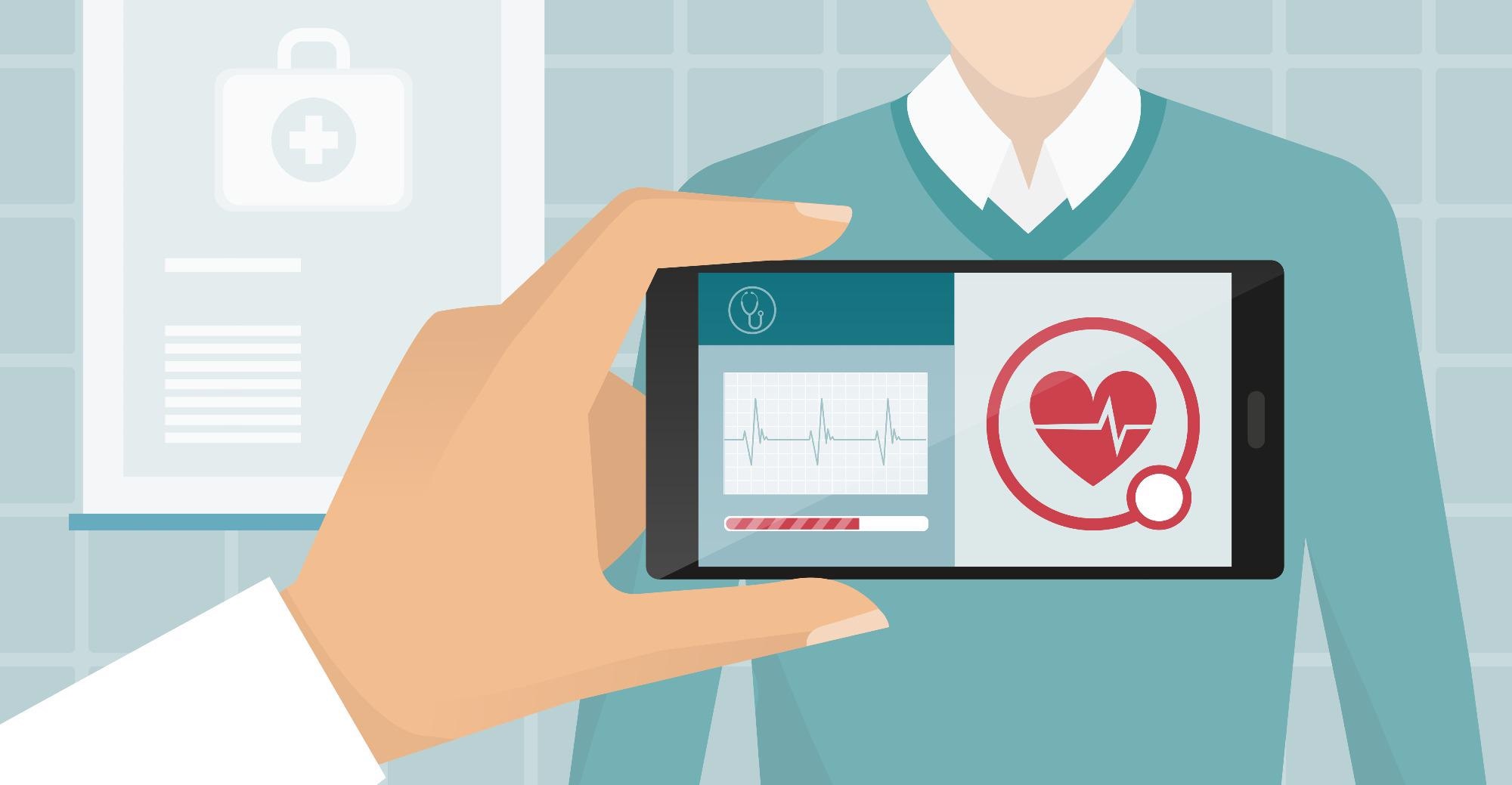The Internet of Things plays a significant role in smart health monitoring. The Internet of Medical Things is a network of interconnected electronic devices dedicated to medical uses such as rehabilitation, nursing, disease monitoring, anomaly detection, patient monitoring, conditioning, and remote and telemedicine care systems.
As such, several sensors on devices have been developed that are capable of collecting patient data. At the center of these devices is the use of sensors that can recognize things such as body movements, using accelerometers, temperature monitoring devices, and eye blinkers.

Image Credit: elenabsl/Shutterstock.com
What are the advantages of smart cameras?
In contrast to normal monitoring, the use of smart cameras allows surgeons to use cameras to monitor vital signs without being in the vicinity. The smart camera software watches for any changes in video frames as a patient's chest rises and falls when they breathe, for example.
It avoids the intensive process of physically examining patients, which subsequently limits their motion, reducing their ability to get out of bed or perform common activities like showering or using the bathroom. Smart cameras also offer greater sensitivity than can be afforded by human assessment, tracking subtle changes in the tone of skin and using a range of measures to infer other vital signs such as pulse. Camera monitoring allows the identification of patients who are deteriorating before the symptoms are obvious to a trained healthcare professional.
In contrast to conventional patient check-up, which occurs every 15 minutes in some cases, it can be difficult for health care professionals to determine whether a patient is breathing by simply observing their breathing pattern. This can be disruptive to patients, particularly at night as they are regularly disturbed.
The use of smart cameras, therefore, offers a less intrusive means of monitoring patients. This is critically important after the administration of medication where patients' physical health must be closely monitored. Smart cameras can provide accuracy as high as 94%; that is, smart cameras infer vital signs within two breaths per minute of a contact device, and heart rate measures within three beats per minute.
Examples of smart cameras in healthcare
One way in which smart cameras can be used in healthcare is in privacy. Smart video analytics enable the deployment of a privacy mask to hide a customizable set of objects in the camera view. These include faces or equipment such as medical monitors and devices with screens where sensitive health data is displayed.
This is particularly useful in elder care facilities and memory care units where enhanced monitoring of patients is crucial to patient safety; the use of smart cameras enables monitoring to be achieved without compromising privacy.
Smart cameras for safety
Smart cameras may also be used to increase patient safety. Smart cameras can detect spills and objects in rooms and hallways as well as other highly trafficked areas. Smart cameras can subsequently reduce the probability of accidents such as slips and falls from occurring as they can detect spills in real-time, so staff can act upon them immediately. In addition to physical objects, smart cameras can detect unusual behavior by accurately analyzing patient, staff, and visitor behavior.
Smart cameras to improve building and process efficiency
Smart cameras are also useful in cases where efficiency is required. A critical point in medical facilities is quick access to an emergency department. If smart cameras are connected to patient admission and registration systems, smart cameras can automatically log arrival times, as well as license plate numbers from the car park, which increases operational speed and quality of care when patients are admitted.
Improving building performance
Due to the busy nature of hospital environments, there are complex inherent risks associated with healthcare in the settings. One of these is the prevention and early detection of smoke and fire.
Using security cameras equipped with smart video analytics enables 24/7 surveillance and enables the detection of hazards early without the need for continuous monitoring by humans. Smart cameras can analyze video data and differentiate between harmless potential hazards, for example, Smoke from a cigarette or sunlight, reducing false alarms.
In addition, smart cameras can be used to monitor stock and resources and adequately notify the appropriate staff if individual access to a restricted area stocked with medical equipment, resources, and drugs, occurs. The use of these cameras in these situations is dynamic as the functionality of smart cameras can be fully adapted to suit the individual constraints and needs of the building.
By combining cameras with other forms of information input such as access control and audio systems already present on networks, video cameras are enhanced in their ability to capture data continuously and assess risks, generate automatic alerts, streamline the process is, and analyze large quantities of data with the precision that far exceeds that of humans.
Smart cameras also improve the patient experience by their hands-free nature; patients are afforded the luxury of personal space as they do not have to be hooked up and physically monitored by a healthcare professional several times an hour.
References:
- Mendo IR, Marques G, de la Torre Díez I, López-Coronado M, Martín-Rodríguez F. (2021) Machine Learning in Medical Emergencies: a Systematic Review and Analysis. J Med Syst. doi:10.1007/s10916-021-01762-3.
- Javaid M, Khan IH. (2021) Internet of Things (IoT) enabled healthcare helps to take the challenges of COVID-19 Pandemic. J Oral Biol Craniofac Res. doi:10.1016/j.jobcr.2021.01.015.
- Cummins N, Schuller BW. (2020) Five Crucial Challenges in Digital Health. Front Digit Health. doi:10.3389/fdgth.2020.536203.
- Bohr A, Memarzadeh K. (2020) The rise of artificial intelligence in healthcare applications. Artificial Intelligence in Healthcare. doi:10.1016/B978-0-12-818438-7.00002-2
- Sujith AVLN, Saaj GS, Mahalakshmi V et al. (2021) Systematic review of smart health monitoring using deep learning and Artificial intelligence. Neuroscience Informatics. Doi: 10.1016/j.neuri.2021.100028.
Further Reading